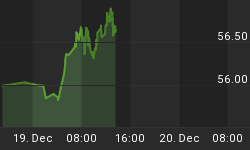The full report is ready for download for subscribers. The professional version is roughly twice the length of the public preview (see below). Any institutions who are contemplating a subscription may reach out to me (Reggie Middleton) access a sample.
Here are the chronology of posts that led to this analysis, ultimately producing the public preview of the analysis (below) and the full forensic analysis as well:
- The Fed Believes Secrecy is in Our Best Interests. Here are Some of the Secrets
- Why Doesn't the Media Take a Truly Independent, Unbiased Look at the Big Banks in the US?
- As the markets climb on top of one big, incestuous pool of concentrated risk...
- Any objective review shows that the big banks are simply too big for the safety of this country
- Why hasn't anybody questioned those rosy stress test results now that the facts have played out?
- A Must Read: An Independent Look into JP Morgan. This contains the "public preview" document (
 JPM Public Excerpt of Forensic Analysis Subscription 2009-09-18 00:56:22 488.64 Kb), which is free to download.
JPM Public Excerpt of Forensic Analysis Subscription 2009-09-18 00:56:22 488.64 Kb), which is free to download.
For subscribers:
![]() JPM Forensic Report (092209) Final- Retail 2009-09-24 03:12:17 130.93 Kb
JPM Forensic Report (092209) Final- Retail 2009-09-24 03:12:17 130.93 Kb
![]() JPM Report (092209) Final - Professional 2009-09-24 03:13:31 550.72 Kb
JPM Report (092209) Final - Professional 2009-09-24 03:13:31 550.72 Kb
Enjoy!
For good measure, here is an excerpt from some interesting reading from a respected bank analysis firm regarding the subject matter at hand.
"During the peak of the financial bubble, nearly one-fifth of the earnings in the S&P 500 came from financials. Today the figure is half that and declining. As we remind subscribers of the IRA Advisory Service every chance we get, the forward ROE for banks is likely to be far lower over the next five years than it was over the past decade. Thus we have to wonder how the G-20 leaders expect banks to raise massive amounts of new equity at a time when they are going to be far less profitable and facing higher near-term credit costs, both individually and as an industry, than at any time since the 1980s. The IMF projects that while loan losses on US bank balance sheets may not reach the 5% seen in the 1930s, losses rates could peak near 4%, a rate that is still catastrophic. A 4% loss rate is close to 3x 1990s level loss rates, this vs. the 2x 1990 loss rate peak projected by IRA.
We view the current "debate" within the G-20 about bank capital as largely irrelevant in financial terms but very significant for the markets. Neither Secretary Geithner not his counterparts within the G-20 seem to understand the precarious situation that is still facing the largest global financial institutions. Let's take a look at JPMorganChase (NYSE:JPM), which we downgraded to a "negative" outlook last week in The IRA Advisory Service, using the EC model in The IRA Bank Monitor as a means of illustrating the problem.
As of Q2 2009, JPM was rated "C" based on an aggregate Stress Index score of 2.0 vs. 3.1 for the industry as a whole (1995=1). The Banking Stress Index is a quarterly stress test survey of all FDIC insured banks. JPM has parent level tangible common equity of 5.42% and bank-only TCE of 5.6%. While the bank units of JPM cumulatively have $114 billion in Tier One Risk Based Capital, the EC calculated for JPM's bank units by The IRA Bank Monitor is $474 billion or 4x the bank's regulatory capital. The RAROC calculated for JPM is just 0.148% vs. a nominal ROE of 5% at Q2 2009.
BTW, users of the consumer and professional version of The IRA Bank Monitor may view the detailed EC analysis for JPM and other banks for Q2 2009.
If the G-20 finance ministers get their way and force JPM to increase its Tier 1 RBC to say $250 billion, that implies that ROE and EPS would be more than cut in half. Does this sound like an attractive investment proposition? More, if anything like the present reforms on OTC derivatives being proposed in the EU and US become law, the earnings and returns for JPM and all large banks will likely fall further from levels observed during the past five years -- even with no regulatory capital increase mandated by the G-20.
So here's our question for Secretary Geithner, Chairman Greenspan and the G-20 finance ministers: Just how do you suppose that larger global banks will be able to raise and maintain additional capital if their earnings are falling and their risk-taking opportunities are receding? The forward model for banks under the G-20 world view looks a lot like a GSE with utility-type attributes that only a government would be willing to fund. And remember that lower leverage means these banks must take more risk in their trading activities to maintain ROE and EPS targets."
May I posit as an answer to the well articulated question above, that the ability to raise capital (at least in the very recent past and potentially in the very near future) is predicated on the snake oil salesman manipulating markets and accounting earnings at direct cost to the retail investor and the institutions that are "not in the know", and ultimately to the detriment of confidence in the stock market in general. After all, I agree with IRA's outlook on the banking industry wholeheartedly yet they have managed to raise quite a significant amount of capital 6 months to date. The more interesting question is "What will happen when the chickens come home to roost?"















